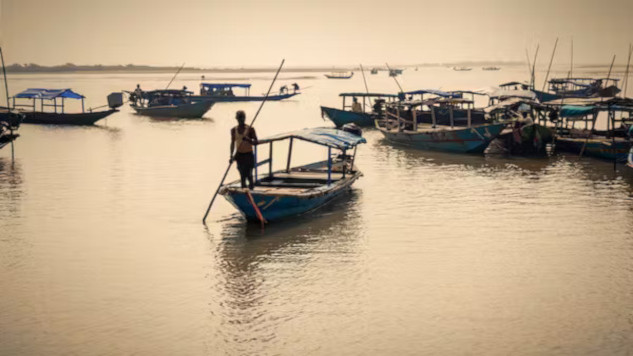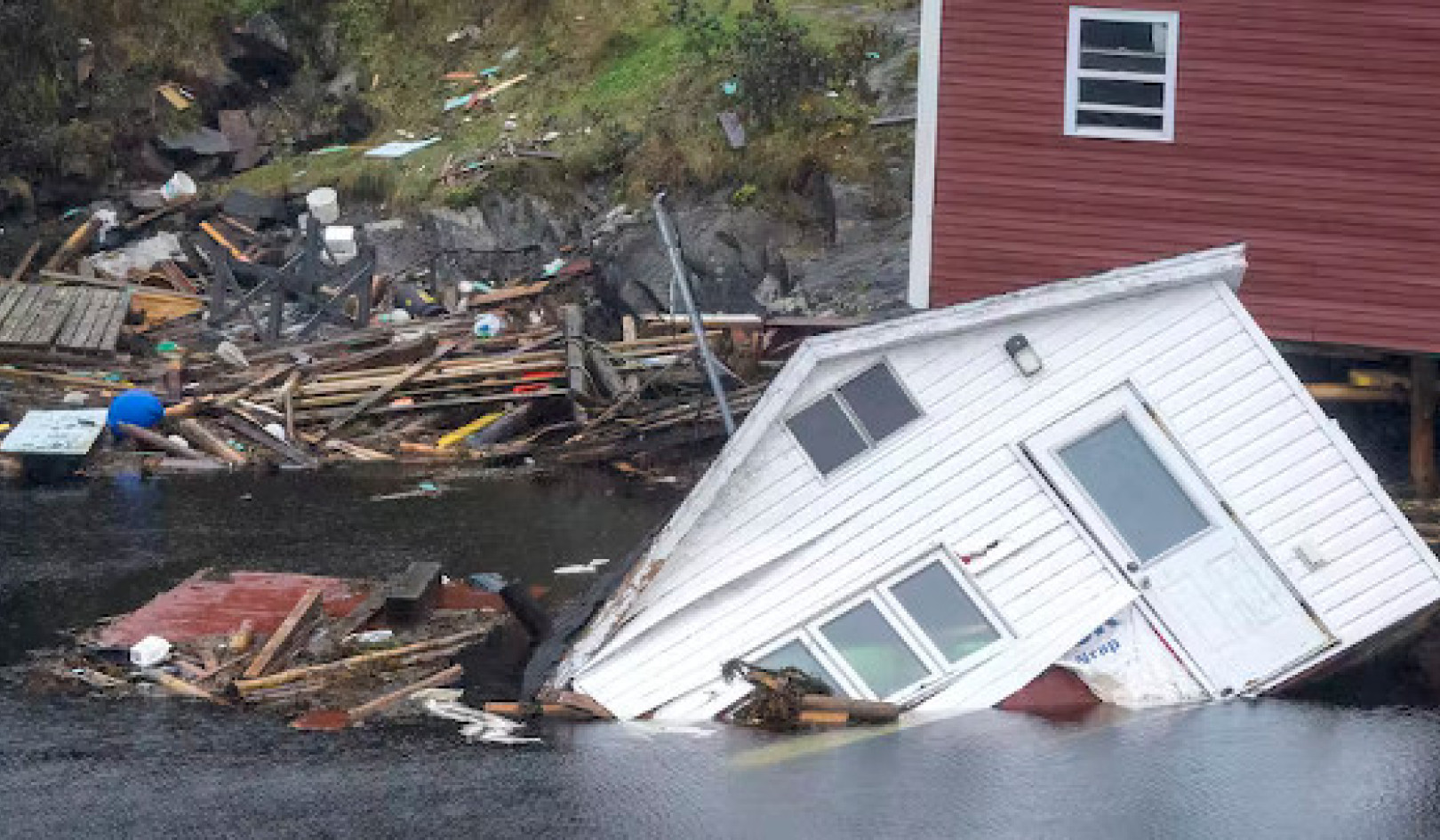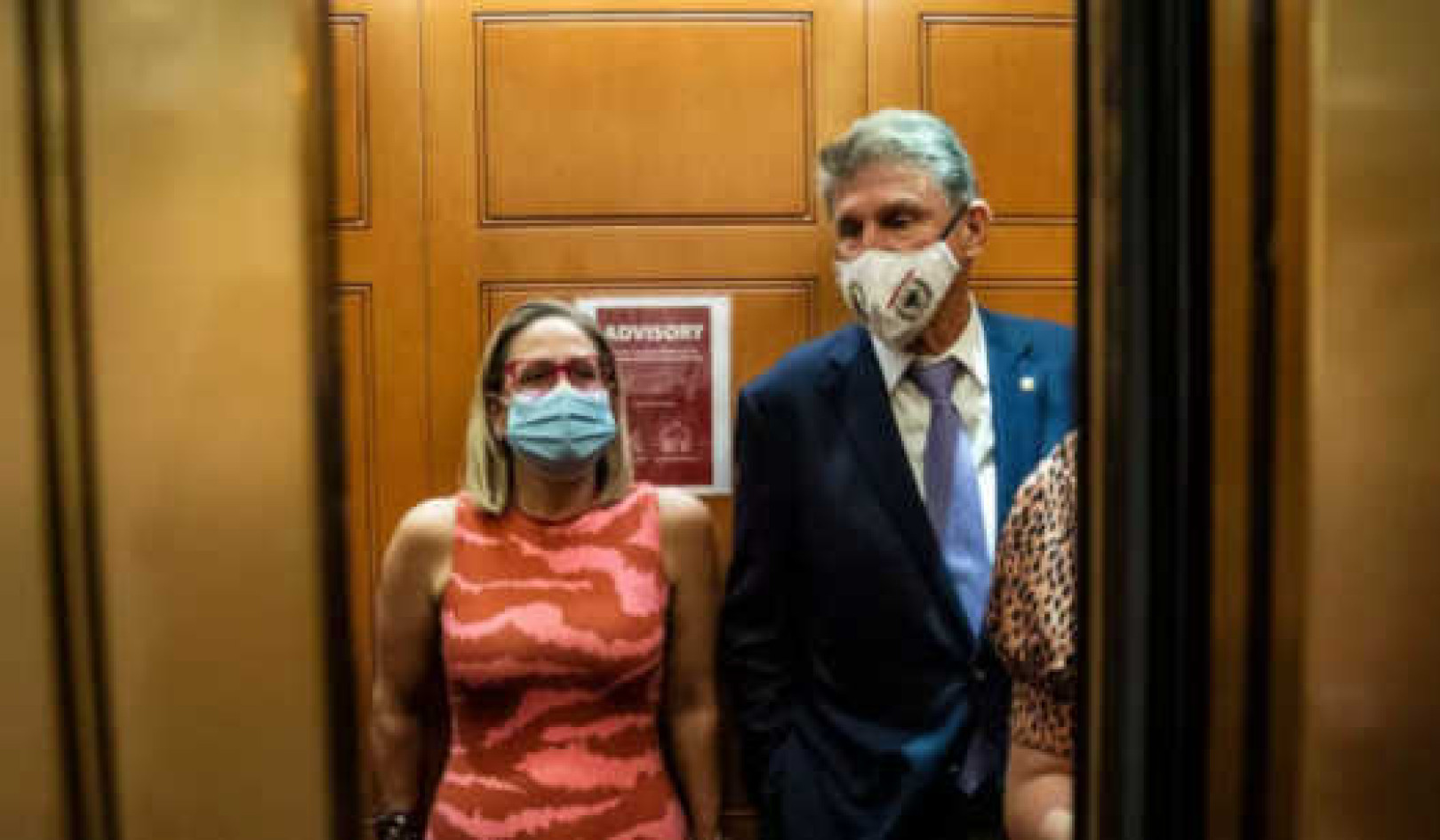
Fishing in Chilika sustains more than 150,000 people. ImagesofIndia/Shutterstock
Across the world, rainforests are becoming savanna or farmland, savanna is drying out and turning into desert, and icy tundra is thawing. Indeed, scientific studies have now recorded “regime shifts” like these in more than 20 different types of ecosystem where tipping points have been passed. Across the world, more than 20% of ecosystems are in danger of shifting or collapsing into something different.
These collapses might happen sooner than you’d think. Humans are already putting ecosystems under pressure in many different ways – what we refer to as stresses. And when you combine these stresses with an increase in climate-driven extreme weather, the date these tipping points are crossed could be brought forward by as much as 80%.
This means an ecosystem collapse that we might previously have expected to avoid until late this century could happen as soon as in the next few decades. That’s the gloomy conclusion of our latest research, published in Nature Sustainability.
Human population growth, increased economic demands, and greenhouse gas concentrations put pressures on ecosystems and landscapes to supply food and maintain key services such as clean water. The number of extreme climate events is also increasing and will only get worse.
What really worries us is that climate extremes could hit already stressed ecosystems, which in turn transfer new or heightened stresses to some other ecosystem, and so on. This means one collapsing ecosystem could have a knock-on effect on neighbouring ecosystems through successive feedback loops: an “ecological doom-loop” scenario, with catastrophic consequences.
How long until a collapse?
In our new research, we wanted to get a sense of the amount of stress that ecosystems can take before collapsing. We did this using models – computer programs that simulate how an ecosystem will work in future, and how it will react to changes in circumstance.
We used two general ecological models representing forests and lake water quality, and two location-specific models representing the Chilika lagoon fishery in the eastern Indian state of Odisha and Easter Island (Rapa Nui) in the Pacific Ocean. These latter two models both explicitly include interactions between human activities and the natural environment.
The key characteristic of each model is the presence of feedback mechanisms, which help to keep the system balanced and stable when stresses are sufficiently weak to be absorbed. For example, fishers on Lake Chilika tend to prefer catching adult fish while the fish stock is abundant. So long as enough adults are left to breed, this can be stable.
However, when stresses can no longer be absorbed, the ecosystem abruptly passes a point of no return – the tipping point – and collapses. In Chilika, this might occur when fishers increase the catch of juvenile fish during shortages, which further undermines the renewal of the fish stock.
We used the software to model more than 70,000 different simulations. Across all four models, the combinations of stress and extreme events brought forward the date of a predicted tipping point by between 30% and 80%.
This means an ecosystem predicted to collapse in the 2090s owing to the creeping rise of a single source of stress, such as global temperatures, could, in a worst-case scenario, collapse in the 2030s once we factor in other issues like extreme rainfall, pollution, or a sudden spike in natural resource use.
Importantly, around 15% of ecosystem collapses in our simulations occurred as a result of new stresses or extreme events, while the main stress was kept constant. In other words, even if we believe we are managing ecosystems sustainably by keeping the main stress levels constant – for example, by regulating fish catches – we had better keep an eye out for new stresses and extreme events.
There are no ecological bailouts
Previous studies have suggested significant costs from going past tipping points in large ecosystems will kick in from the second half of this century onwards. But our findings suggest these costs could occur much sooner.
We found the speed at which stress is applied is vital to understanding system collapse, which is probably relevant to non-ecological systems too. Indeed, the increased speed of both news coverage and mobile banking processes has recently been invoked as raising the risk of bank collapse. As the journalist Gillian Tett has observed:
The collapse of Silicon Valley Bank provided one horrifying lesson in how tech innovation can unexpectedly change finance (in this case by intensifying digital herding). Recent flash crashes offer another. However, these are probably a small foretaste of the future of viral feedback loops.
But there the comparison between ecological and economic systems runs out. Banks can be saved as long as governments provide sufficient financial capital in bailouts. In contrast, no government can provide the immediate natural capital needed to restore a collapsed ecosystem.
There is no way to restore collapsed ecosystems within any reasonable timeframe. There are no ecological bailouts. In the financial vernacular, we will just have to take the hit.
About The Author
John Dearing, Professor of Physical Geography, University of Southampton; Gregory Cooper, Postdoctoral Research Fellow in Social-Ecological Resilience, University of Sheffield, and Simon Willcock, Professor of Sustainability, Bangor University
This article is republished from The Conversation under a Creative Commons license. Read the original article.

Related Books:
The Future We Choose: Surviving the Climate Crisis
by Christiana Figueres and Tom Rivett-Carnac
The authors, who played key roles in the Paris Agreement on climate change, offer insights and strategies for addressing the climate crisis, including individual and collective action.
Click for more info or to order
The Uninhabitable Earth: Life After Warming
by David Wallace-Wells
This book explores the potential consequences of unchecked climate change, including mass extinction, food and water scarcity, and political instability.
Click for more info or to order
The Ministry for the Future: A Novel
by Kim Stanley Robinson
This novel imagines a near-future world grappling with the impacts of climate change and offers a vision for how society might transform to address the crisis.
Click for more info or to order
Under a White Sky: The Nature of the Future
by Elizabeth Kolbert
The author explores the human impact on the natural world, including climate change, and the potential for technological solutions to address environmental challenges.
Click for more info or to order
Drawdown: The Most Comprehensive Plan Ever Proposed to Reverse Global Warming
edited by Paul Hawken
This book presents a comprehensive plan for addressing climate change, including solutions from a range of sectors such as energy, agriculture, and transportation.






















